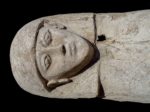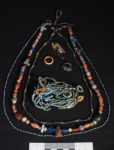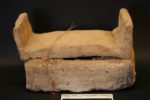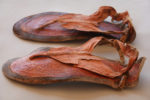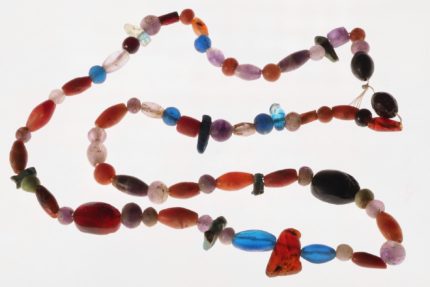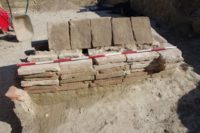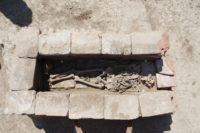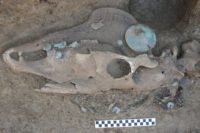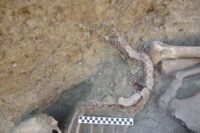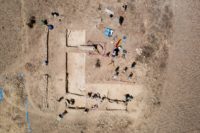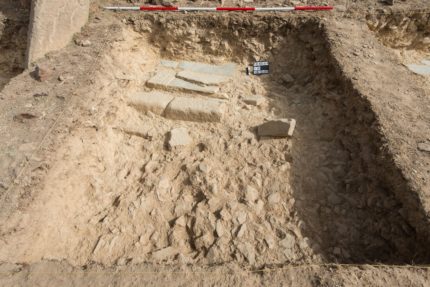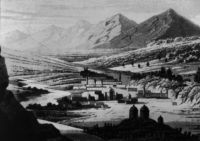 Researchers have discovered the earliest credible evidence of a person being killed by a meteorite. The event took place on August 22nd, 1888, in what is now Sulaymaniyah, Iraq, then part of the Ottoman Empire. The event was recorded by Ottoman officials in contemporary reports that have recently been digitized.
Researchers have discovered the earliest credible evidence of a person being killed by a meteorite. The event took place on August 22nd, 1888, in what is now Sulaymaniyah, Iraq, then part of the Ottoman Empire. The event was recorded by Ottoman officials in contemporary reports that have recently been digitized.
While meteorite debris striking the surface of the earth is not particularly rare, the odds of any of it hitting and killing someone are slim, approximately 1 in 250,000. Still, you’d think at some point in human history there would be solid evidence of a fatal meteorite hit, but the stories that are out there are notably unreliable. No established death from a meteorite hit exists on the historical record.
Most injuries that have occurred during meteorite fall are caused by shock waves, most notably the 2013 Chelyabinsk meteorite impact which sent more than 1600 people to the hospital for cuts suffered when the windows broke. Media reports of a man killed in an explosion in India in 2016 claimed that was the first meteorite death, but scientists put the kibosh on that story as there was no meteor activity that entire month, plus the description of the explosion and the crater left behind are not consistent with meteorite fall.
The only actual meteorite-to-human strike incident that is fully evidenced was not fatal. Mrs. Ann Hodges of Sylacauga, Alabama, was hit by a meteorite that fell into her house on November 30th, 1954. The fragment bounced off her radio and hit her leg. She suffered bruising on her thigh, but recovered without permanent damage. The rock that hit her was collected by George Swindle of the United States Geological Survey and he was able to prove conclusively that the object was a meteorite.
 We do not have the full-circle evidence from the meteorite debris for the 1888 Sulaymaniyah event. What we do have are three detailed reports in written in Ottoman Turkish explaining the event to the authorities. They are not sensationalized, overblown, based on rumor or hearsay or dressed up for public consumption. They are bureaucratic records, dry and factual, from a government that recorded and kept copies of everything.
We do not have the full-circle evidence from the meteorite debris for the 1888 Sulaymaniyah event. What we do have are three detailed reports in written in Ottoman Turkish explaining the event to the authorities. They are not sensationalized, overblown, based on rumor or hearsay or dressed up for public consumption. They are bureaucratic records, dry and factual, from a government that recorded and kept copies of everything.
The first manuscript describes how a meteoroid impact at a village near Sulaymaniyah created a “fireball” (an airburst in modern parlance) and meteorites fell on a pyramid-shaped hill for 10 minutes “like rain.” A bright light and smoke was were seen in a neighboring village. The crops growing in the fields were destroyed and one man was killed. Another man was severely injured and survived but was paralyzed.
The letter was sent by the local governor, Mustafa Faik Mustafa Pasha, to the Ottoman equivalent of the Interior Minister, Ahmed Munir Pasha, on September 13th. It reached Constantinople on October 8th and it was taken seriously right away. The report was forwarded to the sultan the very next day, October 9th.
 The second manuscript is a basically a forward. Ahmed Munir Pasha repeats the summary of the event and relays the governor’s request for instructions from the sultan on how to respond to the event. It was forwarded to the sultan by Grand Vizier Mehmed Kâmil Pasha. Any reply the sultan might have sent has not been discovered yet, but there are millions and millions of documents in the Turkish national archives that have yet to be digitized.
The second manuscript is a basically a forward. Ahmed Munir Pasha repeats the summary of the event and relays the governor’s request for instructions from the sultan on how to respond to the event. It was forwarded to the sultan by Grand Vizier Mehmed Kâmil Pasha. Any reply the sultan might have sent has not been discovered yet, but there are millions and millions of documents in the Turkish national archives that have yet to be digitized.
The third manuscript again summarizes the event and notes that Ahmed Munir Pasha sent “a stone piece” to the grand vizier on October 18th, 1888.
 This event is the first report ever that states a meteor impact killed a man in history ever with the support of three written manuscripts that report an event in a such detail up to our knowledge. Due to the fact that these documents are from official government sources and written by the local authorities, even grand vizier himself as well, we do not have any suspicion on their reality. At this stage, it is obvious that we cannot speculate these stones sent to the administration are really meteorites since we do not have any real physical evidence and even a real sample/(s). However, we are still covering the archives regularly and encounter some documents (unpublished data yet) state that some samples of meteorites in different events were delivered to the Muze-i Hamayun (Archaeology Museum in Istanbul, today).
This event is the first report ever that states a meteor impact killed a man in history ever with the support of three written manuscripts that report an event in a such detail up to our knowledge. Due to the fact that these documents are from official government sources and written by the local authorities, even grand vizier himself as well, we do not have any suspicion on their reality. At this stage, it is obvious that we cannot speculate these stones sent to the administration are really meteorites since we do not have any real physical evidence and even a real sample/(s). However, we are still covering the archives regularly and encounter some documents (unpublished data yet) state that some samples of meteorites in different events were delivered to the Muze-i Hamayun (Archaeology Museum in Istanbul, today).
That is a small needle in a very giant haystack, but it would be so cool if researchers managed to find the sample and confirm its extraterrestrial nature. Even if it did turn up, it wouldn’t be incontrovertible evidence of a deadly meteorite strike because there’s no way to link the man who died in the meteorite fall to that particular specimen as was done with Mrs. Hodges. Still cool though!

